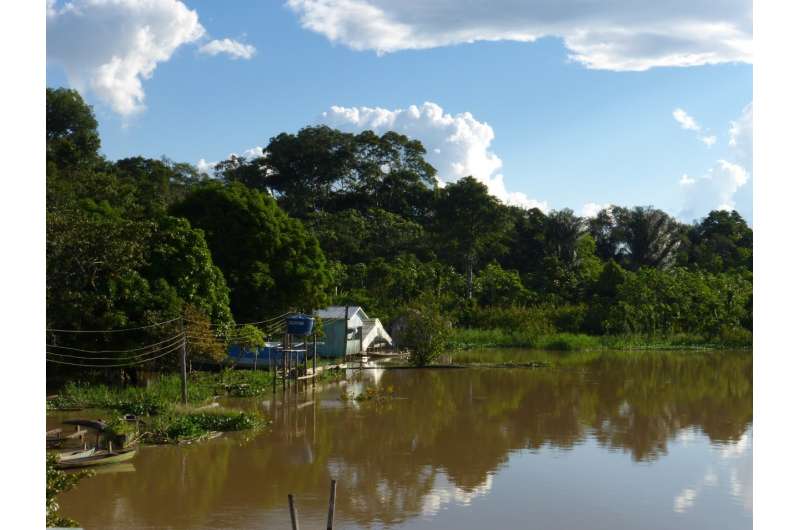Amazonian hunters deplete wildlife but don't empty forests

Conservationists can be "cautiously optimistic" about the prospect of sustainable subsistence hunting by Amazonian communities - according to new research from the University of East Anglia.
Human exploitation of natural resources is a key driver of global biodiversity loss. In tropical forests, overhunting has been implicated in widespread local species extinction and the creation of 'empty forests'.
But a new study published today in PLOS ONE reveals that subsistence hunters from small communities in large areas of intact forest and with access to healthy fish stocks do not appear to be emptying their forests.
This finding only rings true for smaller species and those less sensitive to hunting pressure, however. Numbers of large primates and other large mammals were still found to be depleted near to communities.
Lead author Dr Mark Abrahams, from UEA's School of Environmental Sciences, said: "Understanding the impacts of subsistence hunting in tropical forests is crucial not only to safeguard the world's most biodiverse terrestrial ecosystems, but also to secure a sustainable future for forest-dependent communities."
The research team used novel camera trapping and interview methods to study species in the Amazon.
Working with 60 Amazonian communities in the Juruá and Uatumã regions of Amazonas, Brazil, they deployed 383 motion-activated camera traps and conducted 78 interviews with subsistence hunters.
Hiking for miles through trackless forests to deploy cameras at varying distances from communities, the study sought to understand which species are depleted by hunting and where.
Key findings:
- Large-bodied species and species forming large groups, are depleted near Amazonian communities.
- The biomass of the entire species assemblage is greatly reduced close to Amazonian towns.
- Subsistence hunting did not empty the forest of game vertebrates in the study regions, which retain high forest cover, sources of alternative protein and low human population densities.
The camera trap and interview data showed that large-bodied species and species forming large groups, such as white lipped peccaries, woolly monkeys and tapirs, are indeed depleted near to communities.
Smaller species and those less sensitive to hunting pressure, did not show evidence of depletion near to communities.
By contrast, the biomass of the entire species assemblage was greatly reduced close to towns.
Dr Abrahams said: "Our results imply that conservationists can be cautiously optimistic about the prospect of sustainable subsistence hunting by Amazonian communities. Small communities, living in large areas of intact forest and with access to healthy stocks of fish, do not appear to be emptying their forests.
"But this is clearly no excuse for complacency. Large primates and large ungulates, which are depleted by hunting, play vital ecological roles such as seed dispersal and are crucial to the health of the forest.
"Also, areas where human populations are larger, fish stocks are less abundant and remaining forest cover is less extensive, are likely to experience a far more severe depletion of game animals."
Prof Carlos Peres, also from UEA's School of Environmental Sciences, said: "Our analysis shows that the sustainability of protein acquisition in tropical forests is primarily governed by the spatial context of mortality sinks, human population density, and availability of alternative protein."
More information: 'Measuring local depletion of terrestrial game vertebrates by central-place hunters in rural Amazonia' is published in the journal PLOS ONE on 17 October, 2017.
Journal information: PLoS ONE
Provided by University of East Anglia



















